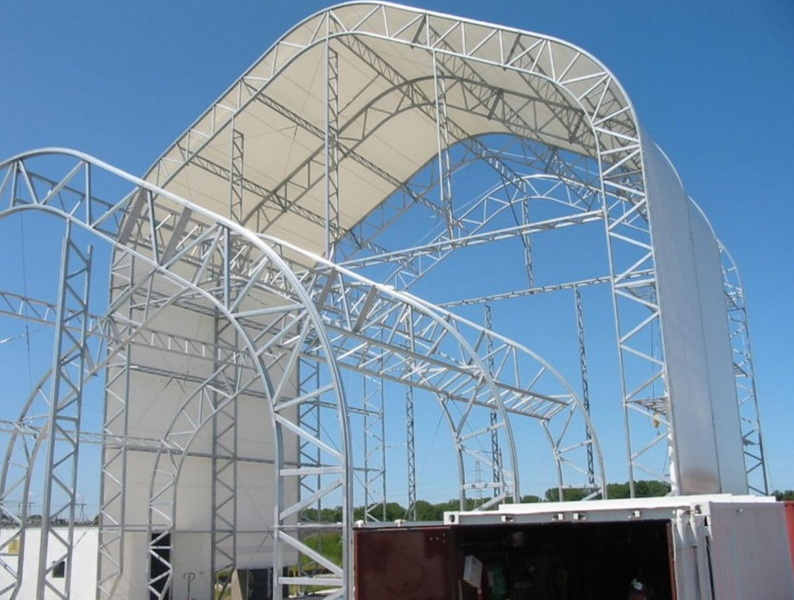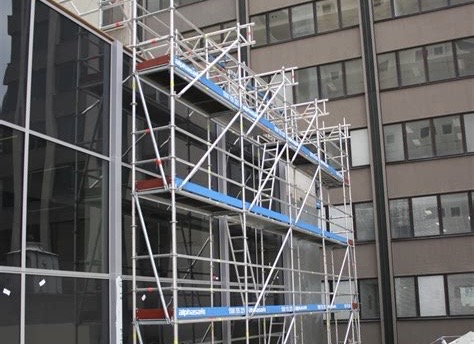Content Menu
● Understanding Aluminum Allround Ringlock Scaffolding
● Assembling Aluminum Allround Ringlock Scaffolding
>> Step 1: Prepare the Site
>> Step 2: Lay Out Base Components
>> Step 3: Install Base Jacks
>> Step 4: Connect Vertical Standards
>> Step 5: Attach Horizontal Ledgers
>> Step 6: Add Diagonal Braces
>> Step 7: Install Platforms
>> Step 8: Final Checks
● Dismantling Aluminum Allround Ringlock Scaffolding
>> Step 1: Remove Platforms
>> Step 2: Detach Diagonal Braces
>> Step 3: Remove Horizontal Ledgers
>> Step 4: Take Down Vertical Standards
● Safety Considerations
● Maintenance and Storage
● Conclusion
● FAQ
>> 1. What is the weight capacity of aluminum allround ringlock scaffolding?
>> 2. How long does it take to assemble aluminum allround ringlock scaffolding?
>> 3. Can aluminum allround ringlock scaffolding be used outdoors?
>> 4. Is training required for assembling scaffolding?
>> 5. How do I maintain aluminum allround ringlock scaffolding?
● Citations:
Aluminum allround ringlock scaffolding is widely used in construction due to its lightweight, durability, and ease of assembly. This guide will provide a comprehensive overview of how to assemble and dismantle aluminum allround ringlock scaffolding, complete with step-by-step instructions, images, and videos.

Understanding Aluminum Allround Ringlock Scaffolding
What is Aluminum Allround Ringlock Scaffolding?
Aluminum allround ringlock scaffolding is a modular scaffolding system that utilizes aluminum components for ease of handling and transportation. It features a unique locking mechanism that allows for quick assembly and disassembly, making it ideal for various construction projects.
Benefits of Using Aluminum Allround Ringlock Scaffolding
- Lightweight: Aluminum scaffolding is significantly lighter than steel, making it easier to transport and handle.
- Corrosion Resistance: Aluminum does not rust, ensuring a longer lifespan compared to traditional steel scaffolding.
- High Strength-to-Weight Ratio: Despite being lightweight, aluminum scaffolding maintains excellent strength, allowing it to support substantial loads.
- Versatility: The modular design allows for easy adaptation to different project requirements, including varying heights and configurations.
- Cost-Effective: While the initial investment might be higher, the long-term benefits of durability and reusability make it a cost-effective option.
Assembling Aluminum Allround Ringlock Scaffolding
Step 1: Prepare the Site
Before beginning assembly, ensure the area is clear and level. This will provide a stable foundation for the scaffolding. It is crucial to remove any debris or obstacles that could interfere with the assembly process.
Step 2: Lay Out Base Components
Gather all necessary components:
- Base jacks
- Vertical standards
- Horizontal ledgers
- Diagonal braces
- Platforms
Ensure that all components are in good condition and free from defects. Conduct a visual inspection to check for any signs of wear or damage.
Step 3: Install Base Jacks
Position the base jacks on the ground at the desired locations. Adjust them to ensure they are level. This step is critical as uneven base jacks can lead to instability of the entire structure.
Step 4: Connect Vertical Standards
Insert the vertical standards into the base jacks. Secure them using the ringlock mechanism. Ensure that each standard is vertical using a level. This will prevent any tilting or leaning of the scaffolding.
Step 5: Attach Horizontal Ledgers
Connect horizontal ledgers between the vertical standards at the desired height. Use the ringlock system to secure them firmly. Ensure that ledgers are evenly spaced to provide adequate support for platforms.
Step 6: Add Diagonal Braces
To enhance stability, attach diagonal braces between the vertical standards. Ensure they are secured using the ringlock mechanism. Diagonal braces are essential for preventing sway and ensuring structural integrity.
Step 7: Install Platforms
Place the platforms on top of the horizontal ledgers. Ensure they are securely locked in place to prevent any movement. Platforms should be checked for any damage or wear before installation.
Step 8: Final Checks
Before use, conduct a thorough inspection of the assembled scaffolding to ensure all components are securely locked and stable. Check for any signs of sagging or unevenness.

Dismantling Aluminum Allround Ringlock Scaffolding
Step 1: Remove Platforms
Begin dismantling by carefully removing the platforms from the horizontal ledgers. Store them safely for future use. Ensure that all tools and materials are removed from the platforms before disassembly.
Step 2: Detach Diagonal Braces
Next, disconnect the diagonal braces from the vertical standards using the ringlock mechanism. Be cautious not to damage the components during removal.
Step 3: Remove Horizontal Ledgers
After removing diagonal braces, detach the horizontal ledgers from the vertical standards. Ensure that all ledgers are safely lowered to the ground.
Step 4: Take Down Vertical Standards
Finally, remove the vertical standards from their bases. Ensure that all components are disassembled safely without damaging them. Store the components in a dry area to prevent corrosion.
Safety Considerations
- Personal Protective Equipment (PPE): Always wear appropriate PPE such as helmets, gloves, and safety shoes during assembly and disassembly.
- Training: Ensure that all workers involved in the process are trained in scaffolding safety procedures.
- Regular Inspections: Regularly inspect scaffolding components for wear or damage before use. This includes checking for any corrosion, dents, or cracks.
- Environmental Factors: Secure scaffolding against wind and other environmental factors that could affect stability.
Maintenance and Storage
- Cleaning: Regularly clean surfaces to prevent corrosion and maintain the appearance of the scaffolding.
- Storage: Store components in a dry area to prevent moisture accumulation. Ensure that all parts are securely stored to prevent damage or loss.
Conclusion
Assembling and dismantling aluminum allround ringlock scaffolding is a straightforward process when following proper procedures. By adhering to safety guidelines and ensuring each component is correctly installed or removed, workers can create a safe working environment at heights. The lightweight and durable nature of aluminum scaffolding makes it an ideal choice for various construction projects.

FAQ
1. What is the weight capacity of aluminum allround ringlock scaffolding?
The weight capacity varies depending on design specifications but generally supports loads around 450 kg for medium-duty applications.
2. How long does it take to assemble aluminum allround ringlock scaffolding?
Assembly time can vary but typically takes between 30 minutes to an hour for a small structure with adequate manpower.
3. Can aluminum allround ringlock scaffolding be used outdoors?
Yes, aluminum scaffolding is suitable for outdoor use due to its corrosion resistance; however, it should be secured against wind and other environmental factors.
4. Is training required for assembling scaffolding?
Yes, proper training is essential to ensure safety and compliance with regulations when working with scaffolding systems.
5. How do I maintain aluminum allround ringlock scaffolding?
Regular inspections for damage or wear should be conducted. Clean surfaces to prevent corrosion and store components properly when not in use.
Citations:
[1] https://scafotech.com/how-to-assemble-and-disassemble-ringlock-scaffolding/
[2] https://www.ajbuildscaffold.com/heavy-duty-multi-directional-galvanized-ringlock-scaffolding-system
[3] https://www.sohu.com/a/394723980_770312
[4] https://rapid-scafform.com/ringlock-scaffolding/
[5] https://www.youtube.com/watch?v=93yqp9ZoVlU
[6] https://patents.google.com/patent/CN1314539A/zh
[7] http://www.kitsen.com/protective-suspended-aluminum-ringlock-scaffolding_p26.html
[8] https://www.youtube.com/playlist?list=PLA3xlc4L3NKoybr9AnWJ9cRG-m5GVAx-e
[9] https://patents.google.com/patent/WO2023071385A1/zh






















